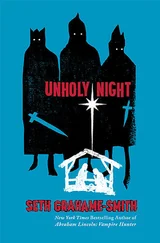“First off, what the tests do is break down percentages, not actual race.”
She tapped the keypad and her first graphic came up. It was a map of the world with three small silhouettes standing along the bottom. She was using the wall as a screen; it worked fine.
“Basically a lot of our DNA is junk. It’s a matter of geography. Let’s say—a long time ago—we’ve got an Asian who lives someplace in the Pacific Rim. Let’s put him, for our purposes, in China.”
She transferred a small figure to China and filled in the figure with slanting lines.
“His family stays there for generations and over time, there are a few minute variations, some hiccups in his DNA that naturally occur randomly, and once they occur, they get passed down through generations. Those are called polymorphisms in the DNA, or SNPS, pronounced snips. ”
She waited as the scribbling subsided and the group was ready for her to go on.
“Now let’s move a different guy to Cape Horn. He started out there and his family lives there for generations, long before recorded time. He’s called a sub-Saharan African.”
She placed a second figure in the south of Africa and filled in the outline with gray pixels.
“Same deal. Lives there eons and he has random snips that are passed down through his line and everybody in his part of the world has some of these same snips, but and here’s the key thing: the guy in Cape Horn probably never went to China, not to move there, not even on vacation—we’re talking thousands of years ago, not now, jumping on a plane. So, the guys in Asia are going to have different snips than the sub-Saharan Africans living at Cape Horn.”
She danced the third figure into what looked like the middle of France.
“Here’s our third guy. He started out in what is now Europe. He has his own snips that go way back in time and that we still see coming up in his relatives alive today. He’s called Indo-European.”
She filled the third figure in with dots and turned to the audience. “These snips insert themselves randomly and are then copied and passed down through generations. Different continents fostered different snips. We fast-forward to today.”
She tapped the keypad again and figures appeared across the world, each a mix of slanting lines, gray pixels, dots; each figure different.
“Nobody’s stayed in a neat little box, but we can pretty accurately trace percentages, how much percentage of a person comes from each of these subgroups. The most sophisticated tests involve one hundred and seventy-six of those snips, narrowing the ancestral pool pretty conclusively. Lights, please.”
Zsloski blinked in the sudden light, looking confused, and Grace amended it.
“It means that after testing a sample, the most sophisticated tests can accurately say that a person is maybe—say—ninety-two percent Indo-European and eight percent sub-Saharan African.”
“So we’d be looking for a white guy.”
“In that example, Mike, yes; if you had this DNA sample at a crime scene, you’d be focusing on white suspects, because it would be genetically impossible for the perp to have come from a predominantly different subgroup. It stands to reason that it would serve to narrow the suspect pool in a reasonable way and save valuable time on the street.”
“I got it.”
“It’s not an exact science but I can tell you this, there’s a DNA printing outfit in Florida that’s a leader in this type of thing; they routinely do blind tests and nail it, every single time, just based on DNA. That means that if they analyze a sample that’s predominantly Indo-Europe-an, the features of the actual person will express in Caucasian features and skin tones, ditto if it’s Asian or African.”
She clicked off the graphic.
“Any questions?”
FBI Special Agent Beth Loganis raised her hand; not really a hand, the merest flag of a manicured finger elevated for the briefest of seconds. She was about Grace’s age, early thirties, with the burnished look that always spoke of enriched preschool and normal childhoods with mothers who remembered to lay out lunch money and buy laundry soap. It was a look that, despite years of faking, Grace knew she’d never get right. Knew that all a woman like Beth had to do was take one look at her to know that, too.
“This is the lecture Bartholomew crashed?” A faint tinge of condescension colored Beth’s question.
Grace swallowed her irritation. “Pretty much. Little simpler this time, but yeah.”
Zsloski harrumphed into his hand.
“What do you think Bartholomew was trying to tell you?” Beth clicked her sterling silver pen and readied it.
“The only time I met Professor Bartholomew, he was lunging at me with a protest sign and spouting sound bites from the Bill Ayers playbook.”
Pete nodded. “At the time of his death, he was a full-tenured professor at Riverside University, teaching a popular undergraduate-level course called ‘Silent Voices.’ It was about the ones history forgets—the ones on the bottom. He was arrested at Grace’s lecture by a Palm Desert cop in a roomful of forensic biologists.”
The sheriff investigator patted the pocket of his tan shirt. He had penetrating mahogany-colored eyes the same color as his skin and wore his hair close to the scalp. His brass ID bar read t. thantos. “So he wanted to get arrested.”
“Looks that way,” Pete said. “He got press, if that was the plan.”
In her mind, Grace saw the Desert Sun article taped to Bartholomew’s wall.
Thantos pulled a Mars bar out of his pocket and unwrapped it. “DNA testing for race would definitely have pushed Bartholomew’s buttons. From what we’ve got so far, he was all about how human dignity was compromised by putting racial groups in boxes.”
“Bartholomew could have been trying to tell us we’re looking for a racist,” Grace offered. “But if the doer was using racial percentages somehow, the question is why? What’s the point? Why would those be flagged?”
Zsloski shifted his bulk in his chair. “It doesn’t have to be a racist. Could be somebody in law enforcement. Based on what you said. I mean, we’re the guys who use this stuff, right?”
“Or some genealogist with a grudge,” Beth suggested.
“Or it’s possible the suspect had a genetic anomaly shared by only a small subgroup.”
Grace shut down her computer.
“Any idea yet what kind of crazy Bartholomew was?”
Her uncle shook his head. “We’re doing cross-checks with every face on that wall. Dividing the photos into subgroups—class, gender, race. Whatever it is, it’s not mentioned in either his university file or medical chart, so right now we’re shooting in the dark.”
The group was already starting to gather notepads and pens and tuck them away. Grace looked down the table. “Any more questions?”
Agent Beth Loganis flipped open her cell phone and checked for messages. Grace felt a slow burn.
“Good, because I’ve got some. What in the hell is going on here?”
Faces looked up. The noise stilled.
“Two fields torched and somebody’s died. What is this?”
She stared at her uncle. He stared back, dark eyes inscrutable in a face creased and grooved and furrowed, as if everything he’d seen in his job had chiseled out a piece of him. Another couple years and he’d be left with nothing but a skull.
“I’ve flown over three thousand miles through the night and driven in from San Diego. I think I deserve to know.”
Her uncle grew still. She could feel him weighing what to say.
“You understand this is information that you are not to share outside this room.”
She couldn’t believe he’d actually said that. “Or you’ll have to kill me, right?”
Читать дальше












